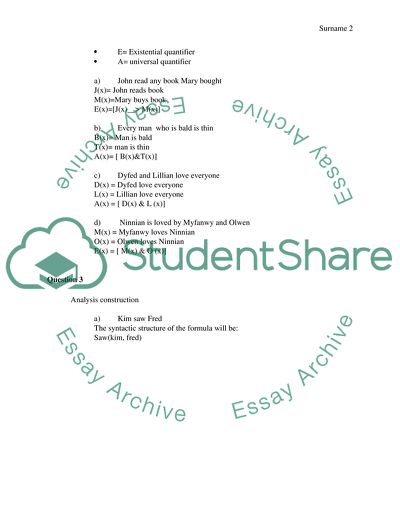Cite this document
(Logical Semantics Assignment Example | Topics and Well Written Essays - 1250 words, n.d.)
Logical Semantics Assignment Example | Topics and Well Written Essays - 1250 words. https://studentshare.org/humanitarian/1869604-logical-semantics
Logical Semantics Assignment Example | Topics and Well Written Essays - 1250 words. https://studentshare.org/humanitarian/1869604-logical-semantics
(Logical Semantics Assignment Example | Topics and Well Written Essays - 1250 Words)
Logical Semantics Assignment Example | Topics and Well Written Essays - 1250 Words. https://studentshare.org/humanitarian/1869604-logical-semantics.
Logical Semantics Assignment Example | Topics and Well Written Essays - 1250 Words. https://studentshare.org/humanitarian/1869604-logical-semantics.
“Logical Semantics Assignment Example | Topics and Well Written Essays - 1250 Words”. https://studentshare.org/humanitarian/1869604-logical-semantics.


